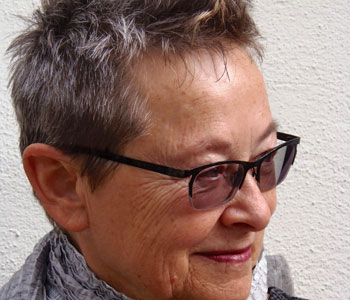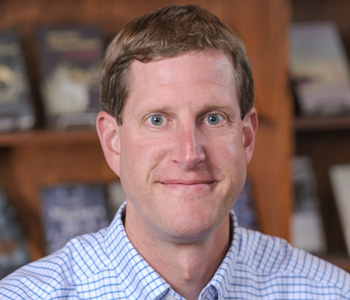Eric Gordon
The Urban Spectator: American Concept Cities from Kodak to Google
Dartmouth College Press
240 pages, 9 x 8½ inches
ISBN 978 1584658030
In The Urban Spectator, I look at how practices of media spectatorship, from the handheld camera to radio and television and the digital computer, have influenced the way Americans have experienced and ultimately designed their cities.
Taking photographs, viewing movies, listening to radio, using a computer, doing a Google search on a mobile phone, these are all methods of seeing the world by collecting artifacts of the world. I call this possessive spectatorship. And the American city, developing late in the 19th century and in parallel with new technologies such as hand held photography and cinema, has, from its beginning, been influenced by this spectatorship. The American city, I argue, is a product of possessive spectatorship such that its history is entangled with the history of media consumption.
The Urban Spectator is not meant to be a history of the American city. Instead, it identifies moments of clarity where media practices and urban practices overlap, where seeing and possessing the city inform being in the city, and in some cases, the design of the city. The Urban Spectator is a series of vignettes, assembled to produce the semblance of a whole, just as media representations possessed by the spectator are assembled to produce a legible experience of the city. It is a poetic reflection on urbanism and spectatorship that seeks to make connections where before there were none. Looking at the city and looking through media are intimately connected phenomena.

<em id="">The Urban Spectator</em> is a series of vignettes, assembled to produce the semblance of a whole, just as media representations possessed by the spectator are assembled to produce a legible experience of the city.
I started writing this book as part of my graduate work in media studies. I was interested in cities and found myself attracted to how cities were represented in films. But the more I examined the topic, the more I questioned the relationship between cities and their representations.
Most scholarship on the topic explored how film and television could capture representations of cities and shed light on their meaning. But I wondered if cities could capture representations of media and tell us something about them. I wondered how film, television, radio, or the Internet influenced the physical layout of cities. I wondered how these media affected the nature of experience in cities. And I wondered how these connections were culturally specific to American urbanism.
I was inspired to ask these questions after reading the French sociologist Michel de Certeau’s essay, “Walking in the City.” It begins with a description of a spectator standing atop one of the 1,370-foot high towers of the former World Trade Center and looking down upon the New York streets below. That view “makes the complexity of the city readable,” he argues. The view from on high is a fiction or facsimile of the city, like those drafted by planners or cartographers, but it does not communicate anything about what it is actually like to be in the city. Perhaps the view from on high was like watching a film, I thought. And just as the view from atop a building would influence how one actually experienced the street, so, too, would a media representation.
When I walk down the street, enter a shop, talk with neighbors, I do not need, at the forefront of my consciousness, an understanding of the city as a whole, or what de Certeau calls the concept-city. I do not need to remind myself that I am in New York City each time I enter a store. However, despite the fact that I do not need to consciously contend with the idea of New York, it does influence my everyday interactions in very important ways. Each of the people on a typical Manhattan street corner, for instance, is interacting with their immediate urban spaces while their understanding of those spaces is framed by the evolving concept-city.
Whether directly mediated or not, each practice of the city is embedded within some articulation of the concept-city. A man, brand new to New York, lifts up his arm to hail a passing taxi (an action he has seen again and again in movies); a woman photographs the Empire State Building contemplating the age of Art Deco that produced it; a tourist gets her bearings in the crowded city by calling up a map on her phone. In each of these examples, the concept of Manhattan (understood through mediation) influences the practice of its spaces.
De Certeau demonstrates the interaction between urban practices and the concept-city, but he does not address how each of the elements is composed. What shapes the concept? What organizes practice? My book begins from the dialectic he provides, and offers possessive spectatorship as an explanation of how practices and concepts are structured around a complex assortment of media technologies and urban representations. How did the handheld camera change the way people walked through the city, while simultaneously changing the shape of the city walked through? How did film spectatorship influence the meaning of urban movement, and how did that new meaning get worked into the development of the concept-city? Each chapter in this book explores these and similar questions in order to renegotiate de Certeau’s urban dialectic in light of possessive spectatorship. Images, interfaces, and protocols shape urban experiences, structures of urban desires, and plans for urban spaces.
Chapter 7, on the topic of the database city, is probably my favorite chapter. In it, I examine the development in Hollywood, California known as Hollywood and Highland. This urban entertainment district is meant to be a representation of Hollywood in Hollywood. It is not simply filled with images of Hollywood’s past; instead, it functions as a platform from which to consume those images. It offers a view of the Hollywood sign from every corner, it opens up into the existing streets, and it references the city’s past without having to be explicit. The development carefully nourishes an active spectator that can assemble and reassemble the city’s references with each turn. This is the database city—a city with no content other than to grant access to content. Hollywood and Highland has adopted the formal characteristics of a database.
Hollywood and Highland is a response to a new kind of spectatorship, one that I call the digital possessive. In digital culture, possession is quite literal—networked media encourage, if not mandate, the possession of thoughts, practices and memories in personal folders, accounts and devices. Think blogs, Flickr, Twitter, etc. Just as information online is assembled and ordered in digital aggregators, in Hollywood and Highland, material structures, physical spaces, narratives, imagery, and other people are assembled and ordered as an urban aggregator—a physical space built to construct a sense of possession and control over urban experience and history.
While Hollywood and Highland is a spectacular example of the database city, the logic of the database and the desire for efficient aggregation is influencing much of the contemporary thinking about new urban developments. To design good urban spaces, we need to consider how technology will be used within those spaces. But the practices of digital consumption are not only changing how we interact with digital media in urban space; they are changing also what we expect from our spaces. Media practices do not end when we turn away from the screen – they continue into other aspects of our lives by transferring expectations of usability from the screen to the urban environment.

It is imperative for designers, planners, and architects not to mistake spectatorship for the technology that helps shape it. Spectatorship is culture; and the way we design and inhabit cities is a direct reflection of that culture.
My book makes an argument about the influence of media on urban design and culture. Too often, cities are designed without considering how people actually experience them. The nature of spectatorship, how it is constructed through media practices, is absolutely essential for designing good cities.
Digital media is already altering the urban landscape. GPS-enabled smart phones, for instance, are making it possible for one’s physical location to factor into their web searches. So whether or not architects and planners are paying attention, the digital possessive will be formative of American urbanism in the foreseeable future.
The real challenge will be in the more subtle changes that the digital possessive implies. Spectatorship is not only the result of direct interaction with technology. In most cases, technology has served primarily as a structuring metaphor for urban looking. The digital possessive will begin to alter how spectators interact with each other, with or without network connection. It will begin to alter how they interact with the built environment, with or without technology. It is imperative for designers, planners, and architects not to mistake spectatorship for the technology that helps shape it. Spectatorship is culture; and the way we design and inhabit cities is a direct reflection of that culture.
The Urban Spectator is about the 20th Century American city. But as more and more people move into cities throughout the 21st century, the experiences born of them will be even more influential on the way we live and on shaping the values that guide our lives.




We don't put paywalls. We don't distract you with ads. We don't sell your data.
Please help to keep this running!